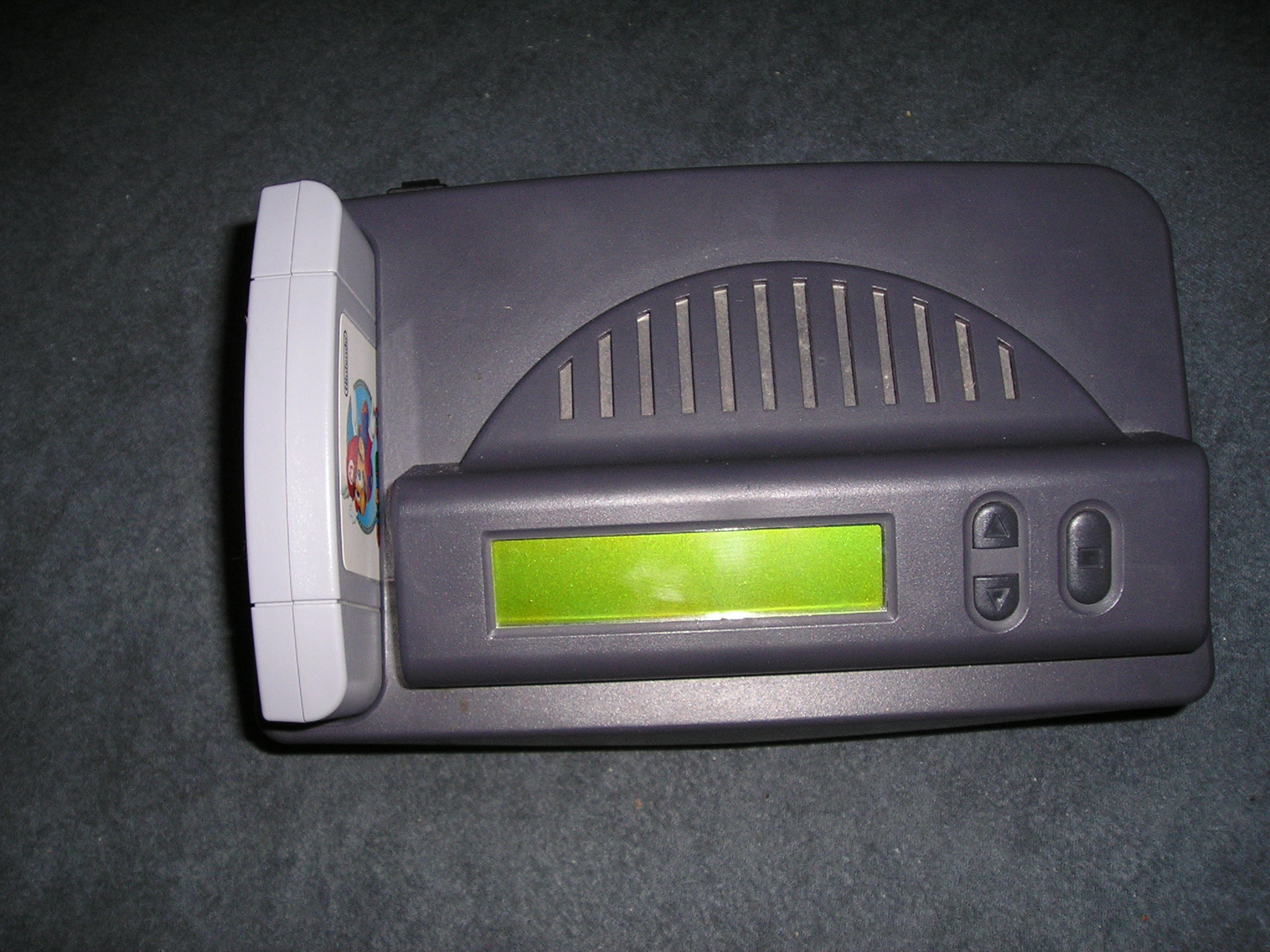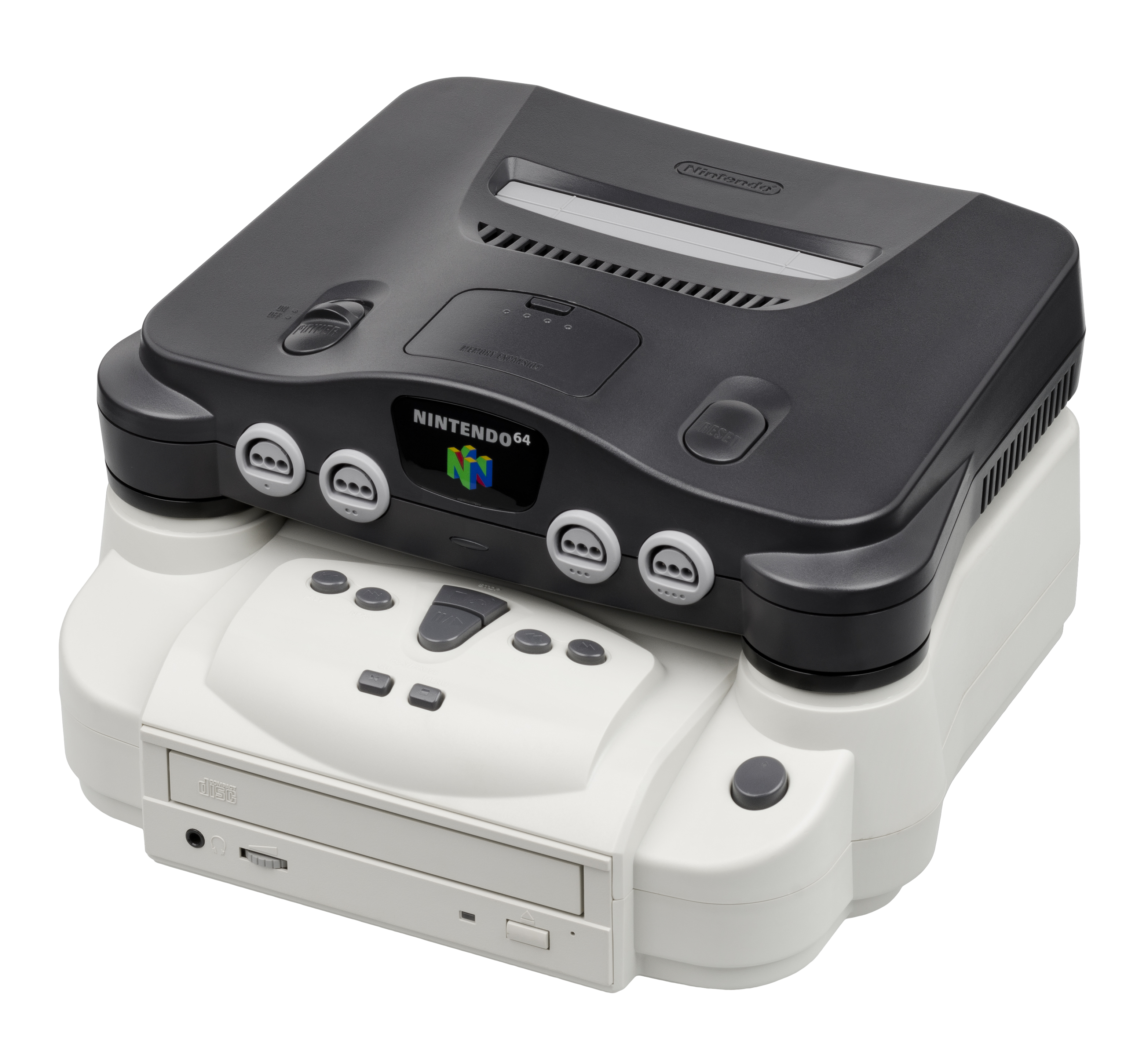|
Mr. Backup Z64
The Mr. Backup Z64 is a game backup device designed by Harrison Electronics, Inc., able to store Nintendo 64 games as ROM images on Zip Diskettes. Units such as this can make copies of a game which can be played in a Nintendo 64 emulator. Design Unlike the Doctor V64, which plugs into the expansion slot in the bottom, this backup unit plugs into the cartridge slot, so the Nintendo 64 perceives it as a regular game cartridge. The unit features an upgradable BIOS, a basic back lit black text LCD panel, and buttons enabling users to unlock and use features of this backup unit. Some units include the ability to add Game Genie codes and various other cheats and saved games. Hardware revisions The original Z64 has a hardware set limit of 128 megabits. Because it is not capable of addressing any RAM above 16 megabytes, the user can not upgrade the RAM in order play bigger games. Once 256 megabit games became more prevalent, the parent company released hardware version 2.0 which ... [...More Info...] [...Related Items...] OR: [Wikipedia] [Google] [Baidu] |
Game Backup Device
A game backup device, informally called a copier, is a device for backing up ROM data from a video game cartridge to a computer file called a ROM image and playing them back on the official hardware. Recently flash cartridges, especially on the Game Boy Advance and Nintendo DS platforms, only support the latter function; they cannot be used for backing up ROM data. Game backup devices also make it possible to develop homebrew software on video game systems. Game backup devices differ from modchips in that modchips are used in conjunction with systems that use generally available media such as CDs and DVDs, whereas game backup devices are used with systems that use cartridges. Video game companies consider these devices as a tool for reverse engineering to facilitate copyright infringement. Most of the devices are made in China, but they are available globally. Recently, legal action has been taken by companies such as Nintendo to remove these devices from the marketplace, but the ... [...More Info...] [...Related Items...] OR: [Wikipedia] [Google] [Baidu] |
Nintendo 64
The (N64) is a home video game console developed by Nintendo. The successor to the Super Nintendo Entertainment System, it was released on June 23, 1996, in Japan, on September 29, 1996, in North America, and on March 1, 1997, in Europe and Australia. It was the last major home console to use cartridges as its primary storage format until the Nintendo Switch in 2017. It competed primarily with the Sony PlayStation and the Sega Saturn. Development began in 1993 in partnership with Silicon Graphics, using the codename Project Reality, then a test model and arcade platform called Ultra 64. The final design was named after its 64-bit CPU, which aided in the console's 3D capabilities. Its design was mostly complete by mid-1995 and launch was delayed until 1996 for the completion of the launch games '' Super Mario 64'', ''Pilotwings 64'', and '' Saikyō Habu Shōgi'' (exclusive to Japan). The charcoal-gray console was followed by a series of color variants. Some games require th ... [...More Info...] [...Related Items...] OR: [Wikipedia] [Google] [Baidu] |
ROM Image
A ROM image, or ROM file, is a computer file which contains a copy of the data from a read-only memory chip, often from a video game cartridge, or used to contain a computer's firmware, or from an arcade game's main board. The term is frequently used in the context of emulation, whereby older games or firmware are copied to ROM files on modern computers and can, using a piece of software known as an emulator, be run on a different device than which they were designed for. ROM burners are used to copy ROM images to hardware, such as ROM cartridges, or ROM chips, for debugging and QA testing. Creation ROMs can be copied from the read-only memory chips found in cartridge-based games and many arcade machines using a dedicated device in a process known as ''dumping''. For most common home video game systems, these devices are widely available, examples being the Doctor V64, or the Retrode. Dumping ROMs from arcade machines, which are highly customized PCBs, often requires ind ... [...More Info...] [...Related Items...] OR: [Wikipedia] [Google] [Baidu] |
Iomega Zip Drive
The Zip drive is a removable floppy disk storage system that was introduced by Iomega in late 1994. Considered medium-to-high-capacity at the time of its release, Zip disks were originally launched with capacities of 100 MB, then 250 MB, and finally 750 MB. The format became the most popular of the superfloppy products which filled a niche in the late 1990s portable storage market. However, it was never popular enough to replace the -inch floppy disk. Zip drives fell out of favor for mass portable storage during the early 2000s as CD-RW and USB flash drives became prevalent. The Zip brand later covered internal and external CD writers known as Zip-650 or Zip-CD, despite the dissimilar technology. Overview The Zip drive is a "superfloppy" disk drive that has all of the -inch floppy drive's convenience, but with much greater capacity options and with performance that is much improved over a standard floppy drive. However, Zip disk housings are much thicker tha ... [...More Info...] [...Related Items...] OR: [Wikipedia] [Google] [Baidu] |
Emulator
In computing, an emulator is Computer hardware, hardware or software that enables one computer system (called the ''host'') to behave like another computer system (called the ''guest''). An emulator typically enables the host system to run software or use peripheral devices designed for the guest system. Emulation refers to the ability of a computer program in an electronic device to emulate (or imitate) another program or device. Many Printer (computing), printers, for example, are designed to emulate Hewlett-Packard, HP LaserJet printers because so much software is written for HP printers. If a non-HP printer emulates an HP printer, any software written for a real HP printer will also run in the non-HP printer emulation and produce equivalent printing. Since at least the 1990s, many video game enthusiasts and hobbyists have used emulators to play classic arcade games from the 1980s using the games' original 1980s machine code and data, which is interpreted by a current-era s ... [...More Info...] [...Related Items...] OR: [Wikipedia] [Google] [Baidu] |
Golden Nintendo 64 With Z64
Golden means made of, or relating to gold. Golden may also refer to: Places United Kingdom *Golden, in the parish of Probus, Cornwall *Golden Cap, Dorset *Golden Square, Soho, London *Golden Valley, a valley on the River Frome in Gloucestershire *Golden Valley, Herefordshire United States *Golden, Colorado, a town West of Denver, county seat of Jefferson County *Golden, Idaho, an unincorporated community *Golden, Illinois, a village *Golden Township, Michigan *Golden, Mississippi, a village *Golden City, Missouri, a city *Golden, Missouri, an unincorporated community *Golden, Nebraska, ghost town in Burt County *Golden Township, Holt County, Nebraska *Golden, New Mexico, a sparsely populated ghost town *Golden, Oregon, an abandoned mining town *Golden, Texas, an unincorporated community *Golden, Utah, a ghost town *Golden, Marshall County, West Virginia, an unincorporated community Elsewhere *Golden, County Tipperary, Ireland, a village on the River Suir *Golden Vale, Munster, ... [...More Info...] [...Related Items...] OR: [Wikipedia] [Google] [Baidu] |
Doctor V64
The Doctor V64 (also referred to simply as the V64) is a Game development kit, development and game backup device, backup device made by Bung Enterprises Ltd that is used in conjunction with the Nintendo 64. The Doctor V64 also had the ability to play Video CDs, audio CDs and had an option for applying stereo 3D effects to the audio. History The V64 came out in 1996 and was priced around $450 USD. Some third-party developers used a number of V64s in their development process. In comparison, the Game_development_kit#Nintendo_64/64DD, Partner N64 development kit sold by Nintendo, manufactured by Silicon Graphics, was an expensive development machine. The Central processing unit, CPU of the V64 is a MOS Technology 6502, 6502 chip (the CPU from the Nintendo Entertainment System); the operating system is stored in the BIOS chip. It is likely that Bung reused most of the design of their earlier NES clones in the Doctor V64. The V64 unit contains a CD-ROM drive which sits underneat ... [...More Info...] [...Related Items...] OR: [Wikipedia] [Google] [Baidu] |
Game Genie
Game Genie is a line of video game cheat cartridges originally designed by Codemasters, sold by Camerica and Galoob. The first device in the series was released in 1990 for the Nintendo Entertainment System, with subsequent devices released for the Super Nintendo Entertainment System, Super NES, Game Boy, Sega Genesis, Genesis, and Game Gear. All Game Genie devices temporarily modify game data, allowing the player to do things unintended by developers such as, depending on the game, Cheating in video games, cheating, manipulating various aspects of games, and accessing unused assets and functions. Five million units of the original Game Genie products were sold worldwide, and most video game console emulators feature Game Genie code support. Emulators that have Game Genie support also allow a near-unlimited number of codes to be entered whereas the actual products have an upper and lower limit, between three and six codes. In 1993, Codemasters began development on a "Game Genie 2", ... [...More Info...] [...Related Items...] OR: [Wikipedia] [Google] [Baidu] |
Operating Temperature
An operating temperature is the allowable temperature range of the local ambient environment at which an electrical or mechanical device operates. The device will operate effectively within a specified temperature range which varies based on the device function and application context, and ranges from the minimum operating temperature to the maximum operating temperature (or peak operating temperature). Outside this range of safe operating temperatures the device may fail. It is one component of reliability engineering. Similarly, biological systems have a viable temperature range, which might be referred to as an "operating temperature". Ranges Most devices are manufactured in several temperature grades. Broadly accepted grades are: *Commercial: 0 ° to 70 °C *Industrial: −40 ° to 85 °C *Military: −55 ° to 125 °C Nevertheless, each manufacturer defines its own temperature grades so designers must pay close attention to actual datasheet spe ... [...More Info...] [...Related Items...] OR: [Wikipedia] [Google] [Baidu] |
Nintendo 64 Accessories
Nintendo 64 accessories are first-party Nintendo hardwareand third-party hardware, licensed and unlicensed. Nintendo's first-party accessories are mainly transformative system expansions: the 64DD Internet multimedia platform, with a floppy drive, video capture and editor, game building setup, web browser, and online service; the controller plus its own expansions for storage and rumble feedback; and the RAM-boosting Expansion Pak for big improvements in graphics and gameplay. Third-party accessories include the essential game developer tools built by SGI and SN Systems on Nintendo's behalf, an unlicensed SharkWire online service, and unlicensed cheaper counterparts to first-party items. In the fifth generation of video game consoles, the Nintendo 64 had a market lifespan from 1996 to 2002. First-party First-party Nintendo 64 accessories have a product code prefixed with NUS, short for "Nintendo Ultra Sixty-four". Controller The Nintendo 64 controller (NUS-005) is an "m"-shaped ... [...More Info...] [...Related Items...] OR: [Wikipedia] [Google] [Baidu] |








